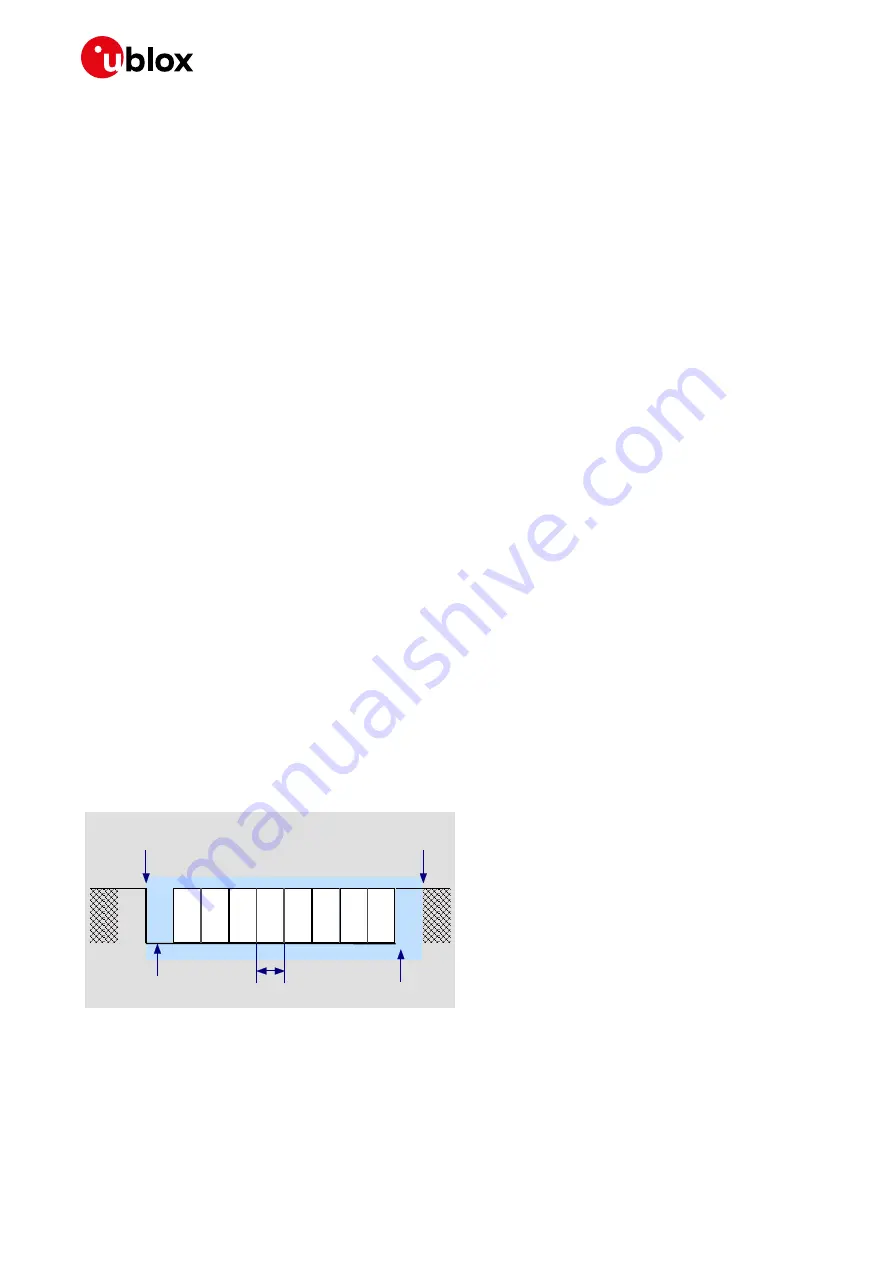
SARA-N2 / N3 series - System integration manual
UBX-17005143 - R13
System description
Page 25 of 95
C1-Public
SARA-N3 series modules include the
RXD
,
TXD
,
CTS
,
RTS
,
DTR
,
DSR
,
DCD
,
RI
pins as main primary
UART interface, supporting:
•
AT communication
•
FW upgrades by means of the FOAT feature
The main characteristics of the SARA-N3 series modules main primary UART interface are the
following:
•
Serial port with RS-232 functionality conforming to ITU-T V.24 recommendation
•
It operates at
V_INT
level, with voltage value set as per external
VSEL
pin configuration
o
0 V for low data bit or ON state
o
V_INT
, i.e. 1.8 V or 2.8 V, for high data bit or OFF state
•
Data lines (
RXD
as module data output,
TXD
as module data input) are provided
•
Hardware flow control lines (
CTS
as output,
RTS
as input) and
RI
output line are provided, and they
can be alternatively configured as described in section
(for more details see also the SARA-N2
/ SARA-N3 series AT commands manual
•
The modem status and control lines (
DTR
as input,
DSR
as output,
DCD
as output) are not
supported by
“
00
”
product versions
•
Hardware flow control disabled by default
•
One-shot automatic baud rate detection enabled by default
•
UART works in low power idle mode, supporting 4800, 9600, 19200, 38400, 57600 b/s baud rates
•
8N1 default frame format
The UART interface provides RS-232 functionality conforming to the ITU-T V.24 Recommendation
(more details available in ITU recommendation
): SARA-N2 / N3 series modules are designed to
operate as a cellular modem, which represents the Data Circuit-terminating Equipment (DCE)
according to ITU-T V.24 recommendation
. The application processor connected to the module
through the UART interface represents the Data Terminal Equipment (DTE).
The UART interface settings can be suitably configured by AT commands (for more details, see the
SARA-N2 / SARA-N3 series AT commands manual
☞
The signal names of the SARA-N2 / N3 series
modules’ UART interface
conform to the ITU-T V.24
recommendation
: e.g. the
TXD
line represents the data transmitted by the DTE (application
processor data line output) and received by the DCE (module data line input).
describes the 8N1 frame format.
D0
D1
D2
D3
D4
D5
D6
D7
Start of 1-Byte
transfer
Start Bit
(Always 0)
Possible Start of
next transfer
Stop Bit
(Always 1)
t
bit
= 1/(Baudrate)
Normal Transfer, 8N1
Figure 12: Description of UART default frame format (8N1) with fixed baud rate
















































